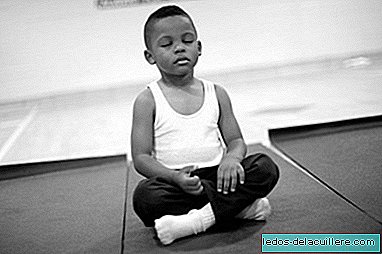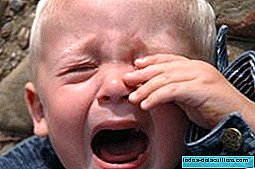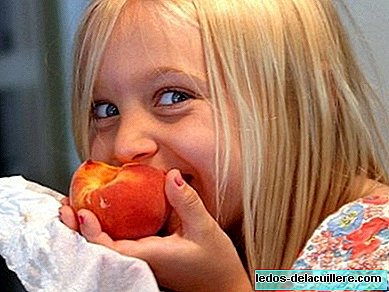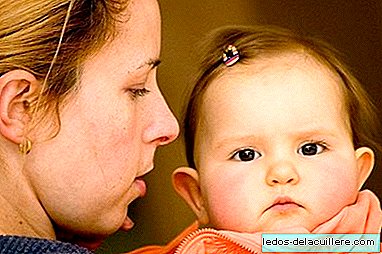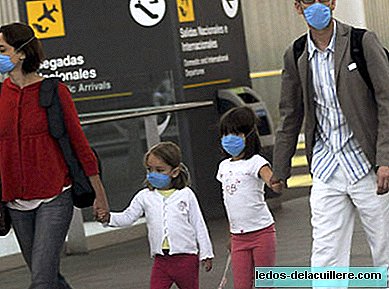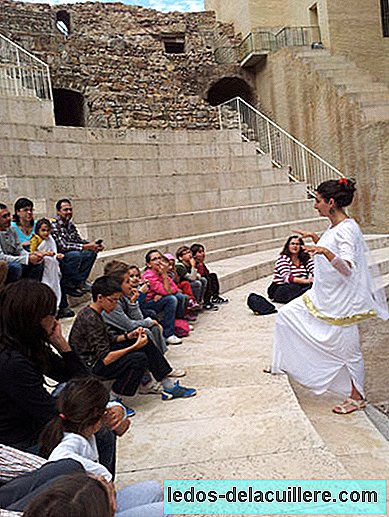
In the last hours, two children under the age of two and two have died drowned in swimming pools in Barcelona and Madrid, figures that remind us that drowning is the second cause of infant death in our country.
For this reason, the National Association of Child Safety, Emergency Lifeguard companies7000 and the Segur Baby group have joined in the campaign #EyePequeAlAgua, with which they intend raise awareness and prevent more children from drowning.
The importance of the 10/20 rule
The #ojoPequeAlAgua campaign It aims to make everyone aware of risk of losing sight of children in the water, even if only a few seconds. Therefore, they offer us a Decalogue of child safety both in swimming pools and on beaches, from which we extract the following points:
- Both in the pool and on the beach, the surveillance of the child must be continuous: children always have to be accompanied by a responsible adult and, if possible, establish surveillance shifts so that at no time does supervision decline.
It is also important to remember that the lifeguards are there to help us but, as they indicate in the Decalogue of Emergencies 7000, these are not nannies and the supervision of the adult that accompanies the child is fundamental.
And if at any time the child is lost sight of, the first place to look is in the water- Apply the 10/20 rule which consists of looking at the water every 10 seconds and, in an emergency, being able to help the child in less than 20 seconds.
- Evaluate risks: If we are in a pool, we must detect if the child could only reach the water in our carelessness and, if so, put measures to prevent this from happening.
If we are on the beach you must always respect the indications of posters, flags or lifeguards and don't get in the water if it's not recommended.
- To incorporate protective measures to prevent accidents, including the use of protective fences to fence private pools in non-summer time.
According to the safety tips offered by the Spanish Child Safety Association, a pool fence must comply with the AFNOR 90-306 standard, 122 cm high, not scalable or harmful to contact.
Teach children to swim as soon as possible, as a preventive measure, although we must never trust each other since a blow or a fall can trigger a drowning.
Always have on hand rescue devices in case an accident occurs
When our child has stopped using the toys, remove them from the water or move them away from the curb and around the pool so that they do not attract the attention of other children who may fall into the water in an attempt to catch them.
We have already commented on several occasions, but it should be stressed again that floats and sleeves are not adequate safety measures for children. Nor does the use of mats in the sea as they give a sense of false security.
In case of urgency, both adults and children should know what to do and call 112 immediately
Alarming figures in summer ... and throughout the year

Although it is the summer season that comes to mind when we hear this tragic news, we must not forget that drownings happen throughout the year. Swimming pools, rivers, beaches, and even bathtubs are potential dangers for children.
So far this year in our country, 16 children have lost their lives drowned, an alarming figure that places drowning in the second cause of infant mortality in Spain and the third worldwide, according to WHOBut the figures are not there and should take good note of them:
A baby can drown in just 10 cm of water; Enough so that your nose and mouth are covered. Therefore, the Inflatable pools are not harmless.
Children under five are the most vulnerable group because they are not aware of the danger.
A child who does not know how to swim drowns in just three minutes, and does so silently, so that constant supervision is key.
More than 50% of child deaths occur due to drowning in private pools, hence the importance of being attentive not only in summer, but also to maximize safety with preventive measures during the rest of the year.
In the last five years, more than 100 children have died drowned
An awareness campaign
With the #ojoPequeAlAgua campaign, the collaborating entities intend to make everyone aware of this serious problem and ask for collaboration so that no more children can return to die drowned in pools or beaches, or be left with serious consequences after drowning.
Therefore, they ask diffusion so that anyone -from public entities to private, families, associations or educational communities- can share information and action decalogues in in their social networks under the hashtag #ojoPequeAlAgua.
3,2,1… #OjOpequealagua campaign to avoid child drowning. From NOW: THANK YOU ALL for SAVING LIVES 👀👶💦 //t.co/S5dr5WMtSN pic.twitter.com/O1ZXytV9fW
- Child Safety (@Pekeseguro) May 29, 2017
 We flood the eye nets, symbol of this campaign, and this summer let's always put ours on top of those we love most!
We flood the eye nets, symbol of this campaign, and this summer let's always put ours on top of those we love most!- IStock Photos
- Via La Sexta TV, National Association of Child Safety, Segurbaby, Emergencies7000
- In Baby and More The best safety measure in beaches and swimming pools: do not take their eyes off them, How and when to teach children to swim, In swimming pool and beach, or floats or sleeves, The terrible images of a child drowning in a Finland's pool without anyone doing anything, A nine-year-old boy warns emergency services and saves his mother's life



